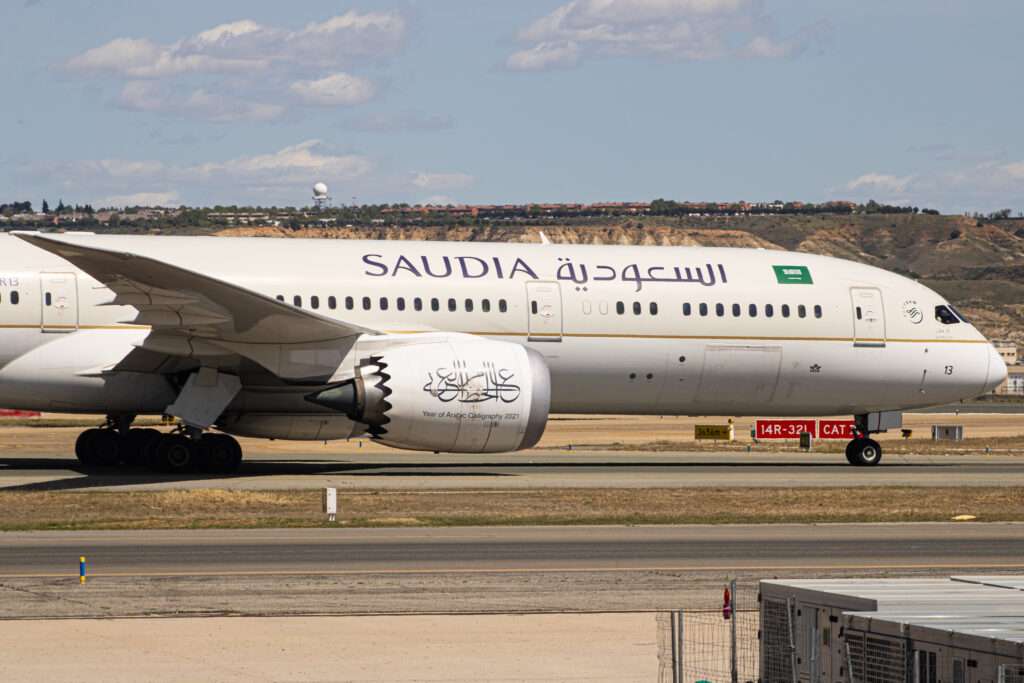AviationSource Editor-in-Chief James Field celebrates a milestone of his 2,000th article by looking into the following topic: The Rise of Aviation in Saudi Arabia.
In this detailed piece, we will take a look at the beginnings of the industry in the Kingdom, it’s airlines, as well as it’s recent investment policy towards the sector.
Without further ado, let’s get into it…
The Beginnings of Aviation in Saudi Arabia…
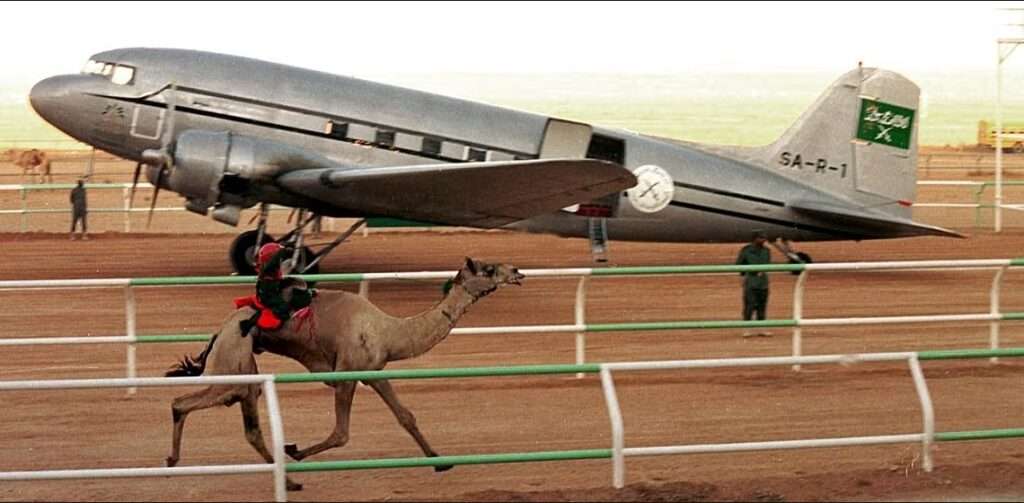
Aviation within Saudi Arabia has been around for nearly 80 years, with the United States kicking off their civil aviation development back in 1945, with SAUDIA.
At this point, SAUDIA was set up as a branch of the Saudi Arabia Ministry of Defence, and with the sufficient backing, routes grew even further.
As we will see throughout this piece, we will be looking at all branches of aviation within the Kingdom, and how it is expected to prosper in the decades to come.
SAUDIA: The Flagship Carrier of Saudi Arabia…
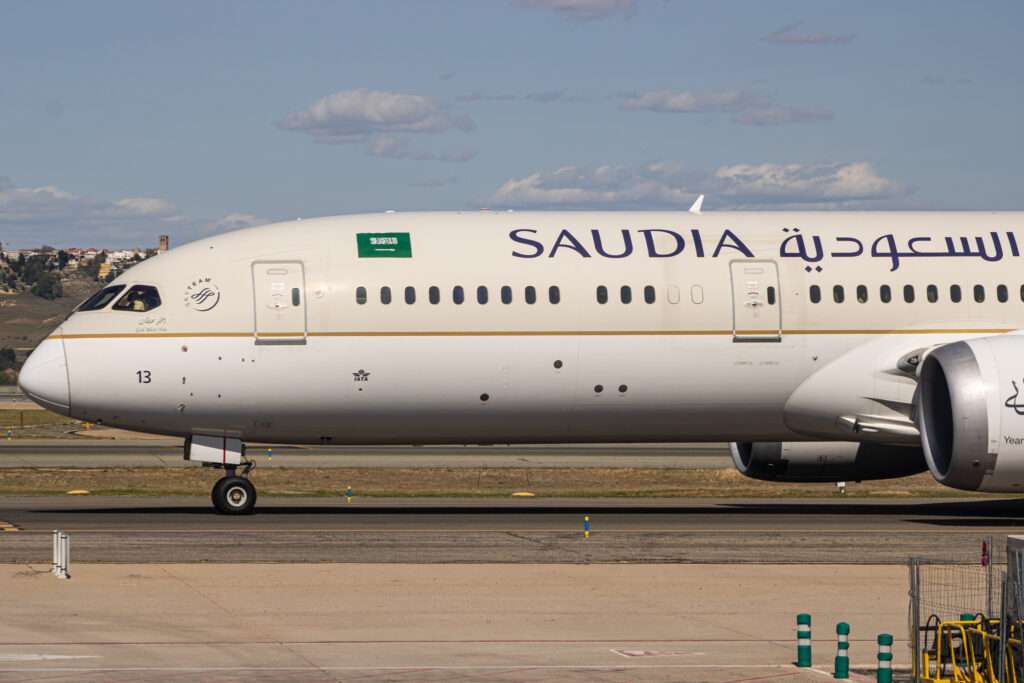
As explained briefly, SAUDIA was the kick-starter for aviation in Saudi Arabia, through its ability to begin connecting to parts across the continent and domestically.
Nowadays, the airline serves over 120 destinations, with a fleet of over 150 aircraft, with many more on the way.
The flag carrier of the Kingdom serves Jeddah mainly, with secondary hubs in Dammam and Riyadh, with Riyadh being an area of focus in the years ahead.
Additional growth and expansion is on the way for SAUDIA, as earlier this year, they placed an order with Boeing for up to 49 787-9 Dreamliners, being 39 firm and 10 options.
When these jets are delivered, this is going to fuel both fleet renewal, but also route expansion, especially on high-density routes that perform the most for them.
Alongside their new and upcoming partner Riyadh Air (Who we will talk about later), SAUDIA will be utilised as part of an overall strategy to offer as many as prosperous connections from the Kingdom as possible.
flynas & flyadeal: Making Low-Cost Travel Accessible in the Kingdom…
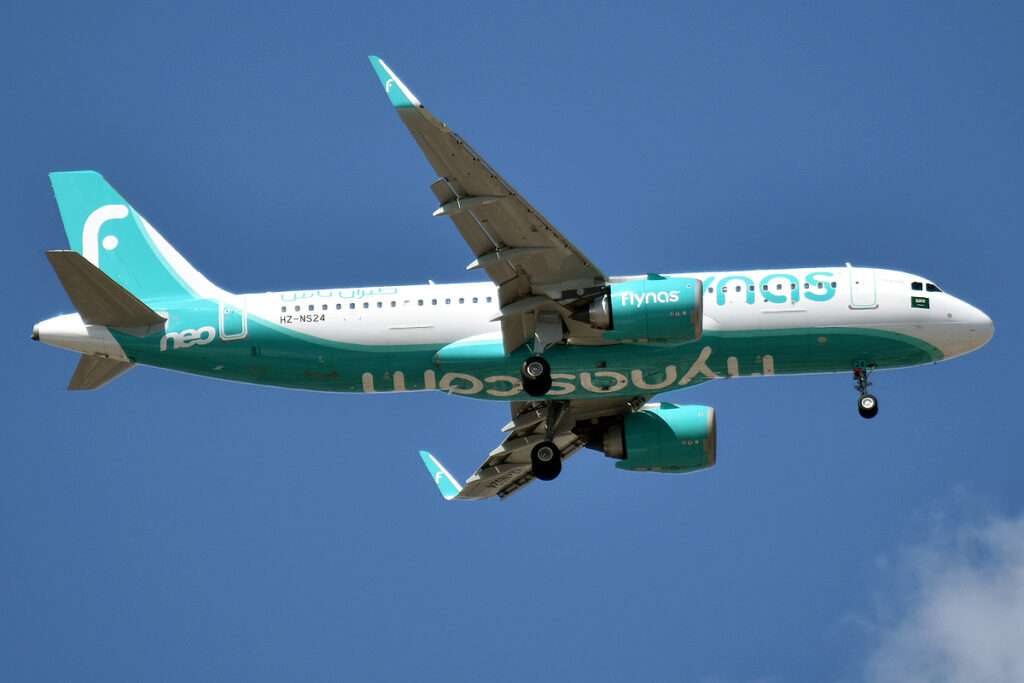
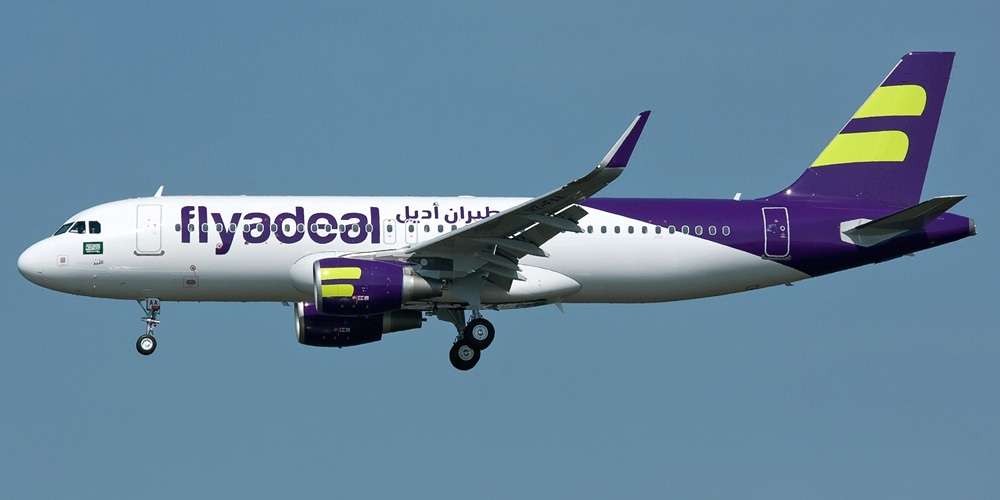
It’s all well and good serving routes with legacy carriers, but you need to make aviation in the Kingdom of Saudi Arabia affordable as well.
This is where flynas and flyadeal come into the equation, who are two low-cost carriers serving a plethora of destinations.
flyadeal currently has a fleet of over 30 aircraft, and serve over 20 destinations, with flynas having a fleet of over 50 jets and serving nearly 100 destinations.
For flyadeal, they plan to get up to 100 aircraft in their fleet, and currently run an all-Airbus fleet, with flynas opting for the long-haul low-cost model in the future with 10 A321XLRs on order, amongst many more standard A320neo Family aircraft.
With flyadeal also being a subsidiary of SAUDIA, this enables connectivity both on a domestic and also a international front, especially in the low-cost angle as well, thus making such flying affordable to everyone in the Kingdom of Saudi Arabia.
The emergence of both carriers over the last 15 years has been significant in ensuring that connectivity, with all eyes on them to see how much further they can take such growth.
[monsterinsights_popular_posts_inline]
The Rise of a New Entrant in Saudi Arabia: Riyadh Air…

Within any country’s aviation sector, there needs to be growth. In this case, meet the latest entrant to the airline industry in the Kingdom of Saudi Arabia: Riyadh Air.
Announced under the premise of the Public Investment Fund (See below), the airline, under the guidance of CEO Tony Douglas, has spent the last six months laying its cards on the table, most notably at the Paris Air Show.
Like with SAUDIA, they also made an order for Boeing 787-9 Dreamliners, totaling 39 firm and 33 options, in what was seen as a bold statement in plans for growth.
Riyadh Air aims to launch services from Saudi Arabia in 2025, with no indication as of yet regarding their upcoming narrowbody order that they said they were going to announce.
However, indications have come about back in May that they are looking at Boeing for the 737 MAX, with the number expected to be in the region of 150.
Riyadh Air is also holding a lot of ambition behind the brand, including it’s target of wanting to serve 100 destinations by 2030.
This would ultimately mean that despite them denying it, that they would seek to be the next Emirates/Qatar Airways/Etihad Airways etc when it comes to offering global connections.
The Riyadh Air side of the equation is one of significant excitement, and all eyes will be on them to see what sort of additional announcements they will make between now and launch day in 2025.

Click the banner to subscribe to our weekly newsleter.
The Kingdom’s Plans for the Future With The Public Investment Fund…


A lot of the elements stated in this article (SAUDIA & Riyadh Air order), the Public Investment Fund of Saudi Arabia is what is driving all of this growth.
Billions and billions of dollars are being invested into infrastructure, which also includes upgrades and additions to its airport infrastructure.
Under the PIF specifically, as well, the Saudi Arabian government is looking at expanding into the following fields for further growth:
- International Diversified Pool.
- International Strategic Investments.
- Saudi Giga-Projects.
- Saudi Real Estate & Infrastructure Development.
- Saudi Sector Development.
- Saudi Equity Holdings.


As it stands, Saudi Arabia is currently the world’s 4th fastest-growing aviation market, and this is all in place because of the country’s Saudi 2030 Vision program.
The aim behind this is to diversify the Saudi economy and transform it into a global hub connecting Asia, Europe, and Africa.
The country has put around $100bn worth of allocated investment for aviation in Saudi Arabia in the hope of attracting upwards of 330 million passengers per year across all new and existing airports by the end of this decade.
With the list of airport projects being worked on at the moment within the Kingdom, this is also why the aircraft are going to be needed to sustain this as well.
Back in July 2022, the Public Investment Fund announced that it would open up an aircraft leasing platform called AviLease.
Initially, after its launch, the new leasing firm will also explore purchase-and-lease-back transactions, secondary portfolio acquisitions, direct orders from aircraft manufacturers, and corporate acquisitions.
This included the acquisition of the aviation side of the business at Standard Chartered.
So, as you go through all of this, you can see exactly what steps Saudi Arabia is taking, with the Public Investment Fund a major factor in that.
Overall: A Key Market To Watch Out For That’s For Sure…


Looking at all this from a wider lens shows exactly how the aviation industry in Saudi Arabia is on the rise, with exponential investment and growth planned.
The rest of this decade is going to be very fascinating. From Riyadh Air planning to launch in 2025, to all of these airport projects undertaking work, the country is going to be revitalised in a very significant way.
This will no doubt make other countries in the Middle East sweat, as this could pressure them to make more investments into their airlines, airports and infrastructure.
Because ultimately, the game is now on to see who can acquire the most foot traffic, tourism, and much more in the Middle East.



Click the banner to subscribe to our weekly newsleter.





